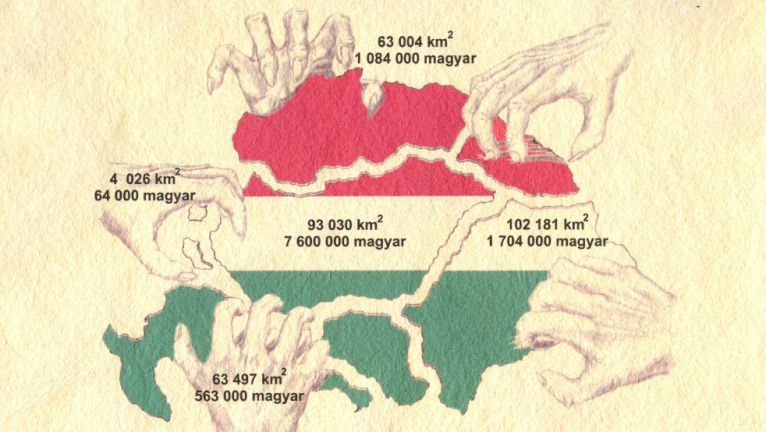One hundred years ago at the end of the first World War, the Treaty of Trianon was signed between Hungary and the winning countries of the Entente Alliance.
Among other things, the Treaty determined the new borders of Hungary, due to the disintegration of the Austro-Hungarian Monarchy, and to ensure the permanent break up of the Empire, the treaty created many small multinational states where empire had stood.
The Treaty of Trianon was signed by the parties on 4 June 1920 at 4:32 PM in the 52-meter-long and 7-meter-wide corridor of the Grand Trianon Castle in Versailles, La Galérie des Cotelles.

In the treaty, the victorious parties declared that Hungary is liable for the damage caused to the victorious states in the war (Article 161); and the further articles and appendices to this section set out in detail the conditions for the consequent compensation.
As a result of the Treaty of Trianon, Hungary with a total area of 325,411 km², was fractured and fell apart. Hungary lost slightly more than 67% (including Croatia 71%) of its area and more than half of its population.
The Treaty of Trianon had a serious effect on Debrecen and the surrounding region, albeit indirectly so.
The Entente countries grabbed every opportunity to punish their opponents and to do so it needed to get Romania on-side, which it succeeded in doing in 1916. Romania was willing to support them in their plans in exchange for a significant amount of territory. This included the territory of Banat, the historical Transylvania, the Partium, and even the eastern part of the Trans-Tisza region was promised to Romania. After the war, the borders of Hungary and Romania would have been the Vásárosnamény-Debrecen-Hódmezővásárhely-Szeged line, according to the treaty.
With the annexation of Oradea, Debrecen remained the only significant cultural center in the region.
The countries of the Entente Alliance did want to annex Debrecen, but the region had heavily suffered from the signing of the peace treaty. It was decided that the Hajdú County and the city of Debrecen would remain, and still belong to Hungary.
However, a very significant migration of people came to Hungary. On one hand, the migration was a difficult task to manage. City leaders tried to provide immigrants with an existential basis and jobs in the long run.
In the spring of 1919, the whole area came under the occupation of the Romanian army, with very serious negative consequences. The occupation was not peaceful, neither in the county nor in the case of Debrecen. The Romanian army tried to punish the local population, if their wishes were not fulfilled, they turned to violence.
The community of Debrecen did not want to and could not forget the negative influences of Trianon. For example, The statue “Magyar Fájdalom” (Hungarian Pain) was erected at Bem Square. “This statue symbolizes the pain of Hungary mourning the fate of its children abducted by the Treaty of Trianon,” written on the pedestal.
The 1920 treaty ended the Austro-Hungarian Empire; and it is still a national wound. History has not recorded any other nation that has survived such a loss.